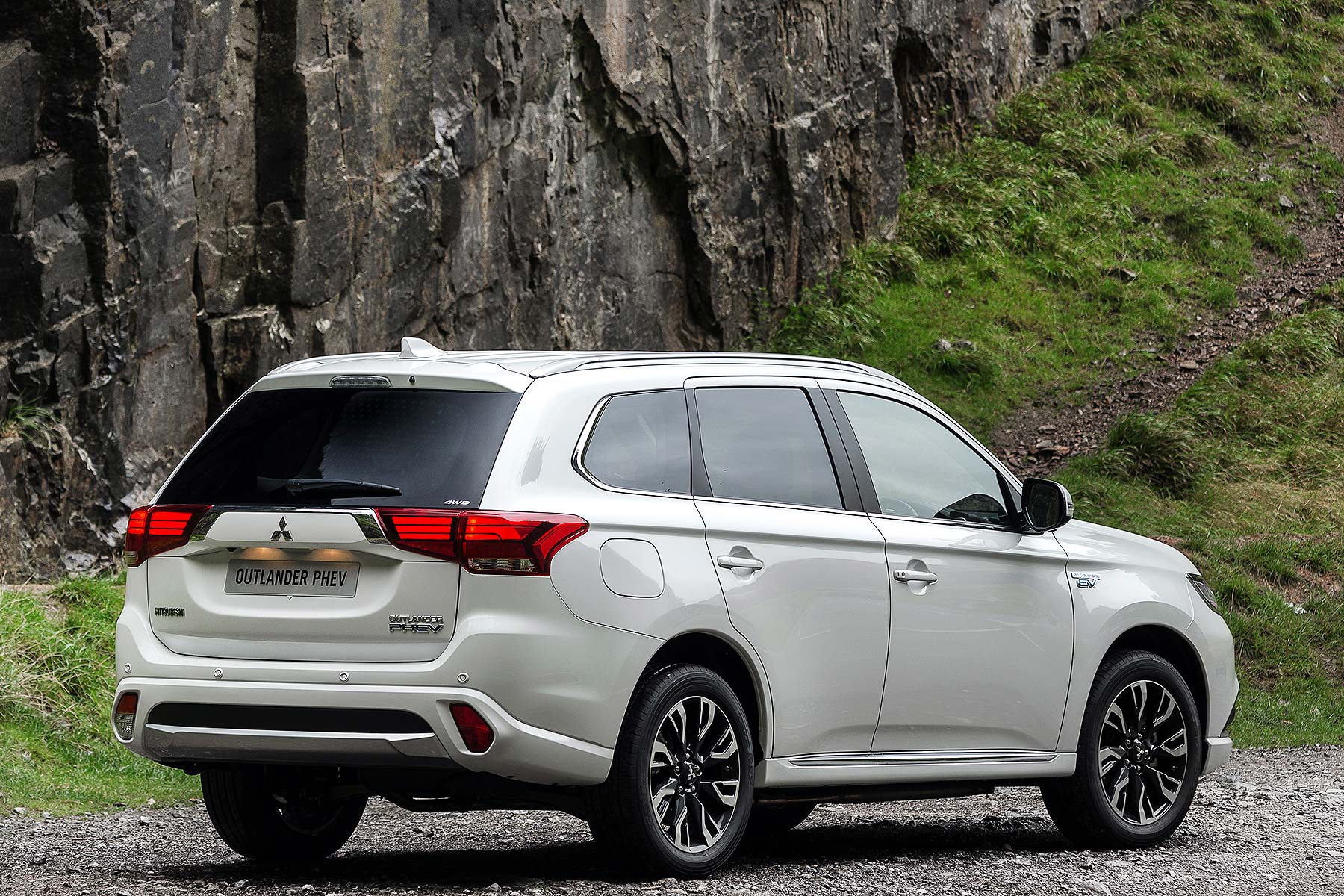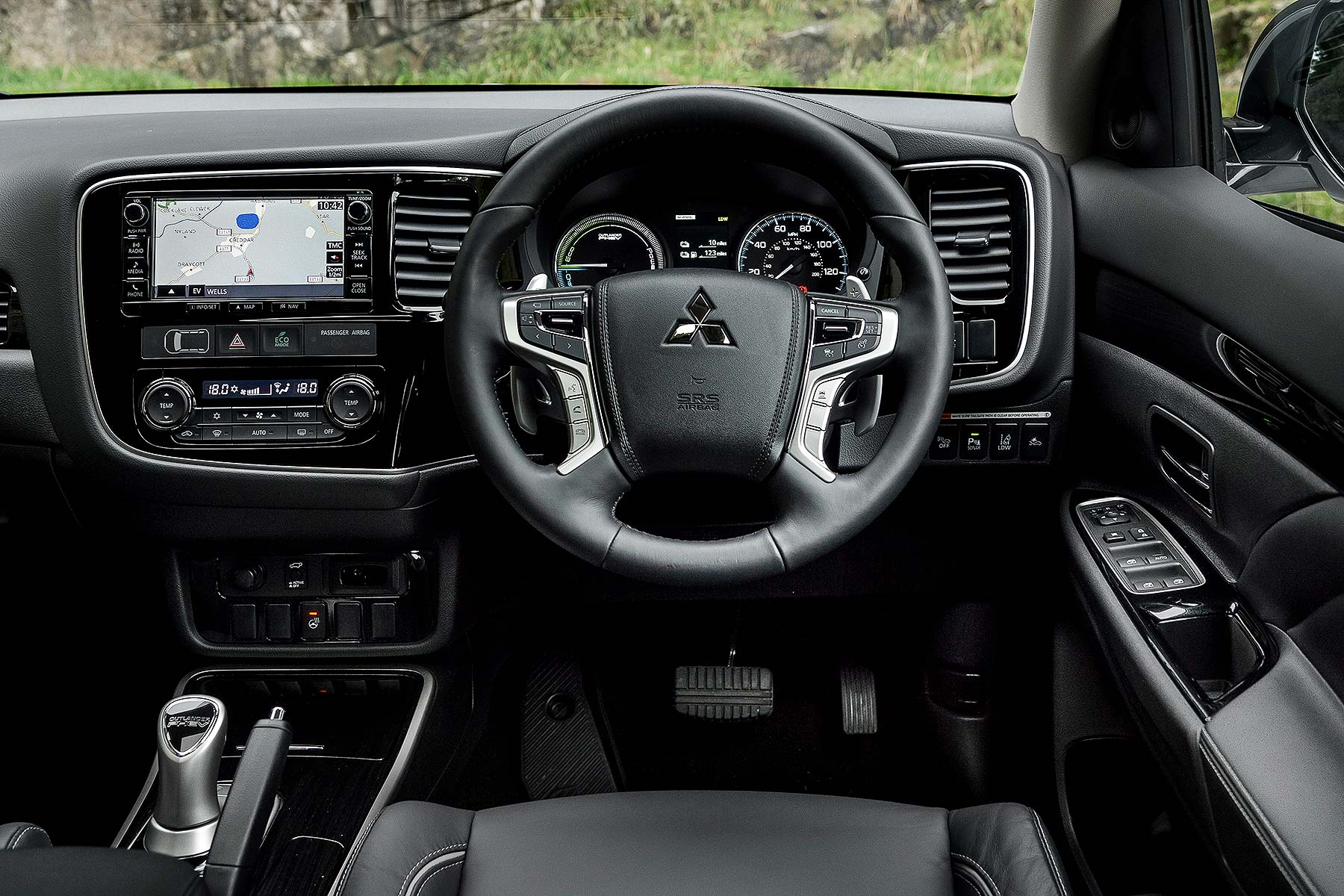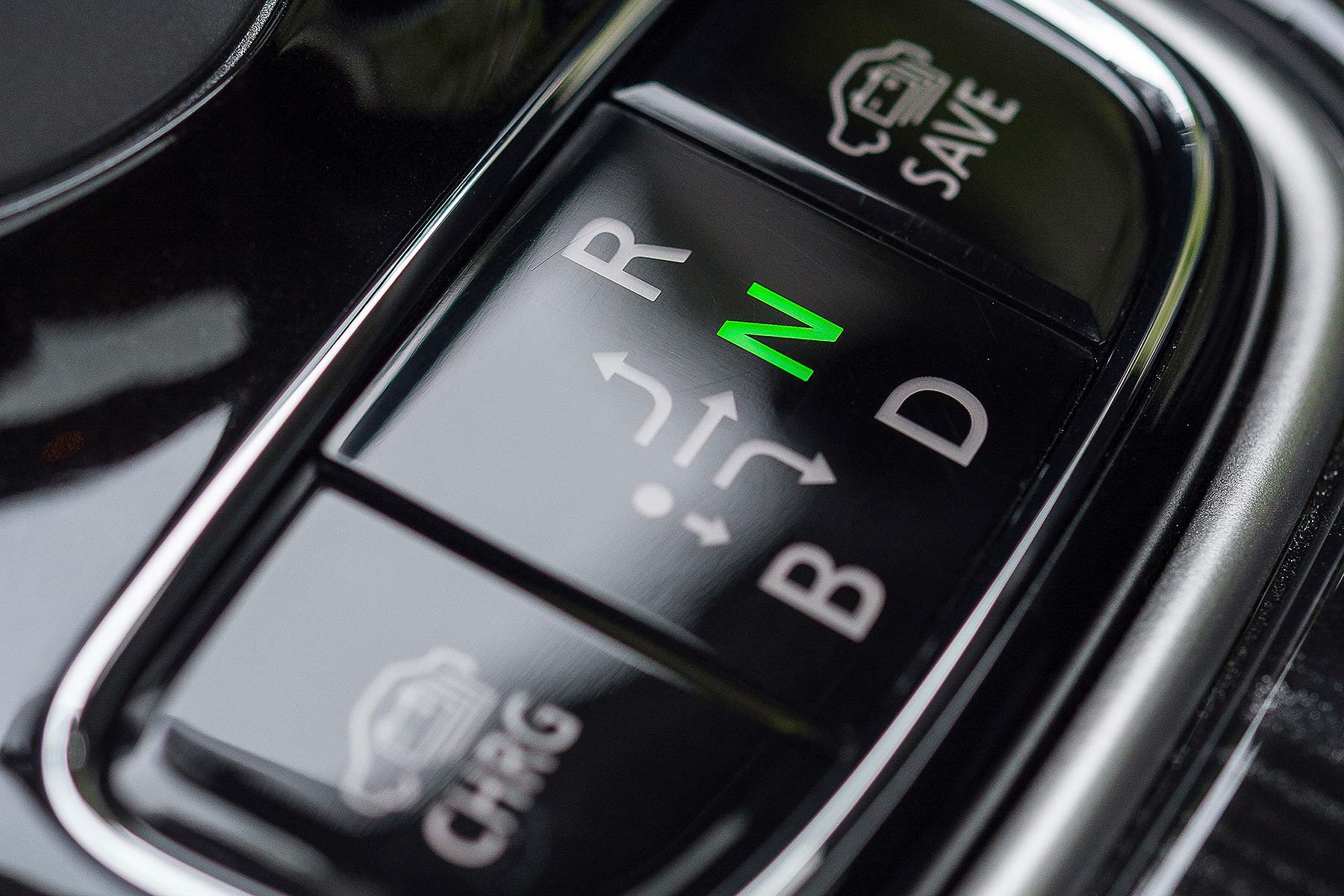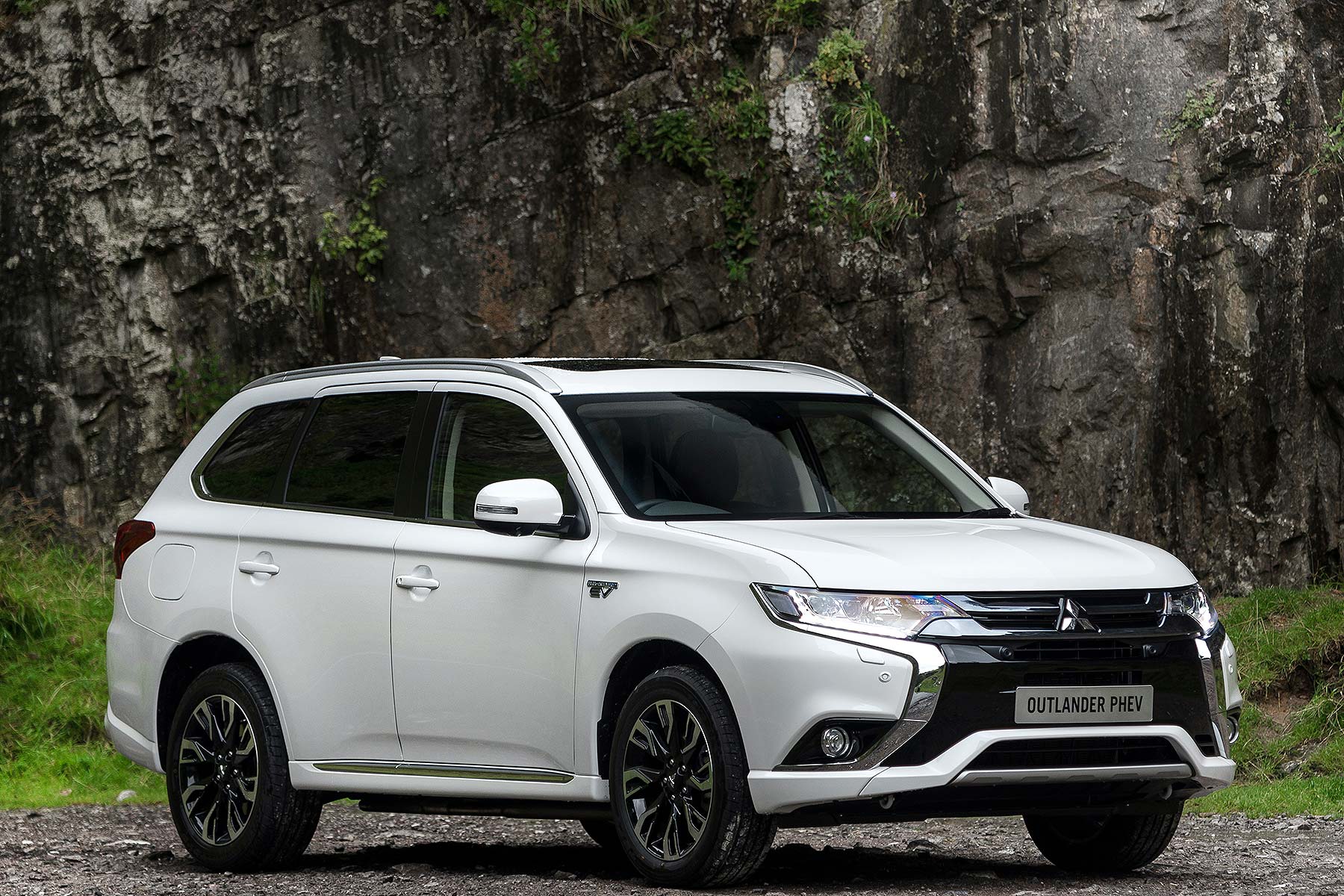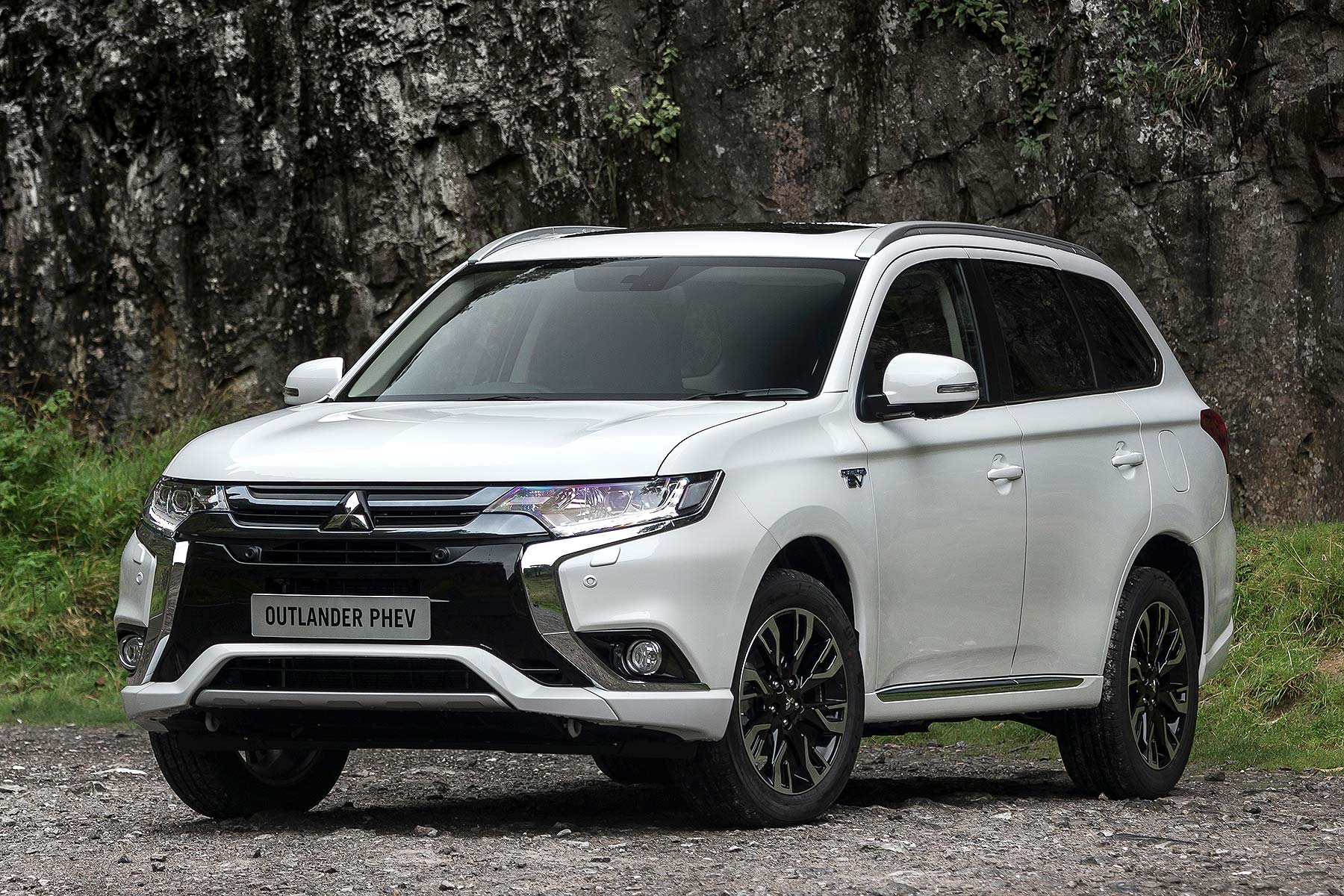 Talk about right car, right time. When Mitsubishi launched the Outlander PHEV in spring 2014, Britain’s plug-in hybrid sector hadn’t broken the 1,000 annual sales mark. A year after launch, Mitsubishi had clocked up 10,000 sales and the Outlander had taken over 8 in 10 of them. It’s defined the sector for many thousands of buyers and has transformed the Mitsubishi brand in the process. It’s been an enormous success.
Talk about right car, right time. When Mitsubishi launched the Outlander PHEV in spring 2014, Britain’s plug-in hybrid sector hadn’t broken the 1,000 annual sales mark. A year after launch, Mitsubishi had clocked up 10,000 sales and the Outlander had taken over 8 in 10 of them. It’s defined the sector for many thousands of buyers and has transformed the Mitsubishi brand in the process. It’s been an enormous success.
VIDEO: Boris Johnson test drives new Mitsubishi Outlander PHEV
Being able to sell it for the same price as a diesel helped enormously: this was the UK Mitsubishi management team’s masterstroke, and the rest of the market still hasn’t caught up. Indeed, it was enough to help us overlook the Outlander PHEV’s weaknesses: hard to quibble too much about a plasticky interior and iffy refinement when you’ve a gamechanger on your hands.
But now, 18 months on, the market is starting to catch up. It’s still not there yet, Mitsubishi proudly points out, but it’s still launched its response in readiness: the new, much-improved 2016 Outlander PHEV facelift. It is, says the firm, one of the most detailed and far-reaching model year upgrades it’s ever rolled out.
Read more:
Plug-in car grant extended to 2018 – but cut for PHEV drivers
Audi A3 e-tron Sportback long-term review
Toyota Mirai review
Pleasingly, it’s a facelift that looks a lot different to its predecessor. No squinting to make out tweaked grille shapes here. The new ‘dynamic shield’ front end is a new Mitsubishi family look and it’s very striking, particularly the mean-looking headlights with built in LED running lights and black-finish central section.
There are new wheels, new colours and, at the rear, new LED tail lamps that are broader, smarter and classier. It gives the Outlander PHEV a much more upmarket appearance, adding substance to the slightly weedy, tippy-toe look of the old car (although it’s a pity the slightly orange-peely paint and tinny clang when you close the doors remain).
The improvements aren’t just skin deep either and, although prices have gone up by £1,000, equipment levels have been boosted to compensate for this. More importantly, the gamechanger has upped its game throughout and is now a plug-in hybrid pioneer you need make no excuse for.
2016 Mitsubishi Outlander PHEV: on the road
Even if you don’t read the nuances of Mitsubishi’s thorough suspension makeover for the Outlander PHEV, you’ll appreciate the benefits, for it’s a notably more pleasant car to ride in and steer. There’s retuned power steering, new anti-roll bars plus upgraded springs and dampers, blending to give more stability, less wallowy handling and a quieter, more composed ride.
It now feels like the springs are better able to use their full travel to absorb bumps and the extra smoothness at speed is welcome. While it doesn’t steer like a sports car – it’s too slow and remote for that – the extra bite and positivity in the system is reassuring and it all makes the Outlander PHEV feel more accurate and less cumbersome to drive.
The powertrain hasn’t changed: there’s still a 60hWh motor for the front wheels and an identical one for the rear, making this the only genuine electric-drive four-wheel drive on sale. It’s the only one whose stability control system works in full EV mode and the only one with active yaw control taken from the Mitsubishi Evo supersaloon.
So it’s a sophisticated drive that, if the battery is full, will operate largely as an EV. It will run up to 70mph with the engine off, so long as you don’t floor it, and only when the batteries are depleted will the engine provide EV charge.
Because of this, and the fact those two motors combine to produce an equivalent of 164hp, the Outlander PHEV is a surprisingly swift thing. The 0-25mph time is actually 2 seconds faster than before, thanks to system improvements, making it appreciably livelier even than its predecessor.
This all comes with typical electric-drive near-silence that’s only punctuated when you come across steeper hills and the cammy-sounding engine starts up. It’s not a particularly loud engine, it’s just that the prior silence magnifies it: Mitsubishi’s worked near-tirelessly on noise isolation to quieten it down though, so it’s likely to be less anything than before when the batteries are flat.
2016 Mitsubishi Outlander PHEV: on the inside
Cheap. That’s how the old Outlander felt. But no more. It’s not quite a Lexus but it’s now a very nicely finished Japanese-look interior indeed. Think upmarket Honda, with similarly exacting fit and finish too.
There are more soft-touch plastics, less shiny stuff and even some nice stitched material for the dial pack. There are fewer buttons, more premium-look trim panels and a very classy-looking central console setup that’s almost as tactile as a Japanese hi-fi.
Mitsubishi has fitted comfier new seats (although they’re still too short in the swab and lacking in side support), smarter-looking door trims, new (and now heated) steering wheel, a latest-gen infotainment system that boots up in half the time and even fancy new seat trim called C-Tec that keeps you warm in the winter and cool in the summer (“but don’t ask us how it does it,” adds Mitsubishi).
It retains all the five-seat spaciousness you get from a purpose-built plug-in hybrid platform; only the lack of seven seats can be considered a compromise, because the boot is rather massive – just 3% smaller than the diesel Outlander, and only that’s because it doesn’t have as much underfloor stowage. Middle-row seat space is vast and big, glassy windows further enhances the spaciousness. It’s a great family five-seater.
What proves a big step on is the improved isolation noise, vibration and harshness. Mitsubishi has made more than 30 technical changes, from closed-up panel gaps and isolated door mirrors, to more noise insulation within the front wings and thicker glass for the windows. Even the front air dam is new, so it flows air away from the front doors to reduce booming.
It’s effective stuff. The 2016 Outlander PHEV is appreciably more refined, with the near-premium gently-damped quietness you’d hope from an electric-drive car. Yes, the roar of the engine when the batteries run down will intrude, but less to than it did and there are two counterarguments even here: at least it’s not a diesel, and at least you don’t have to stop and plug it into the mains…
2016 Mitsubishi Outlander PHEV: running costs
Some commentators are critical of the Outlander PHEV, calling it a 156mpg test cycle star that doesn’t produce such glittering average fuel economy in the real world. Mitsubishi’s response? Depends how you use it. Drive it an an EV and utilise its potential full electric range of 32.5 miles, and you could theoretically get infinite mpg (the firm knows of some customers who’ve covered 4,000 miles and only put fuel in once).
Drive up to 50 miles a day – well above the national average – and you’ll still get significantly more than 156mpg. Whereas if you drive longer motorway journeys, you won’t get 156mpg but you’ll still get mpg comparable to a diesel Outlander. Customers are explained all this when they buy it and not many, if they charge it frequently and use the systems to their full, have cause for economy grumbles.
Tricks to extend the battery life include Mitsubishi’s unique paddleshift brake regeneration system: flick between one of five levels of regen power to substitute for the brakes (the rear brake lights now come on when you use the two most powerful settings). There’s also a Mitsubishi app that lets you pre-heat the cabin before you get in – heating while it’s still connected to the mains means the heater doesn’t drain the battery.
Mitsubishi says it’s the most powerful Plug-in Car Grant-eligible hybrid car you can buy, one of the biggest and most practical, and certainly the only one that offers genuine four-wheel drive ability. Despite this, CO2 emissions have been cut further, to 42g/km; mindful of dieselgate and NOx emissions, it’s both potentially zero emissions in town and, being a cleaner-run petrol, likely to emit less of them when the engine is running.
Yes, prices are up, says Mitsubishi, but the car’s worth it: besides, the extra kit is compensation – posh GX4h models get LED headlights, 360-degree cameras, a heated steering wheel and fancy LED footwell lights; a new GX3h+ variant sits above the base car to add a range-extending pre-heater, Mitsubishi app and heated front seats for a manageable £1,000 more than standard.
Oh, and don’t forget, adds Mitsubishi, it’s also road tax free, exempt from the London Congestion Charge and likely to come with plentiful other benefits as the government and local councils start to reflect on eco-related motoring taxation policies.
2016 Mitsubishi Outlander PHEV: verdict
Mitsubishi has given us a better Outlander PHEV that’s now a genuinely good-to-live-with everyday eco wagon. It’s classier, better quality, more refined and nicer to drive; the drivetrain itself remains clever and effective, and the on-paper eco gains open eyes slighty wider even than before.
It’s not a sports SUV, and it doesn’t have the luxury of a Land Rover Discovery Sport, admits Mitsubishi: neither does it have the £6k price spec-for-spec price hike, either. And the Land Rover isn’t an EV with an onboard range extender; the Land Rover consumes three times as much fuel, emits three times as much CO2. So do all the Outlander PHEV’s other rivals: it remains unique in the marketplace.
Because of this, and because it’s even more able than before, it thus remains highly recommended, particularly if you’re the average Brit with the average daily commute and easy access to a charging point. If you are, and you’ve £30k to spend on a green family five-seater, the Outlander PHEV could be perfect.
2016 Mitsubishi Outlander PHEV: specifications
Engine: 2.0-litre petrol / 2x60kWh electric
Price: From £29,249 (including Plug-in Car Grant)
Power: 164hp
Torque: 244lb ft
0-62mph: 11.0secs
Top speed: 106mph
Fuel economy: 156mpg
CO2 emissions: 42g/km
